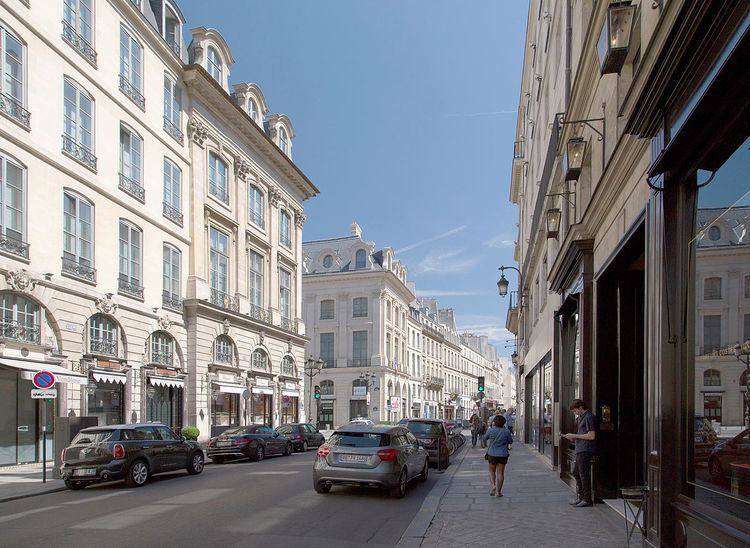Length 1,840 m (6,040 ft) To 14 rue Royale Inaugurated 10 December 1847 | From 21 rue des Halles Denomination December 10, 1847 | |
 | ||
Width 20 m (66 ft) 17.50m 14.60m Quarter Les Halles. Palais Royale. Place Vendôme. Similar Tuileries Garden, Les Halles, Hôtel Costes, Mandarin Oriental - Paris, Place Vendôme | ||
The rue Saint-Honoré is a street in the 1st arrondissement of Paris, France.
Contents
Map of Rue Saint Honor%C3%A9, Paris, France
It is named after the collegial Saint-Honoré church situated in ancient times within the cloisters of Saint-Honoré.
The street, on which are located a number of museums and upscale boutiques, is near the Jardin des Tuileries and the Saint-Honoré market. Like many streets in the heart of Paris, the rue Saint-Honoré, as it is now known, was laid out as early as the Middle Ages or before.
The street, at one time, continued beyond the former city walls into what was the faubourg (from Latin foris burgem, an area "outside the city"). This continuation was eventually named the rue du Faubourg Saint-Honoré.
History
The rue Saint-Honoré has been given the following names in its long history:
